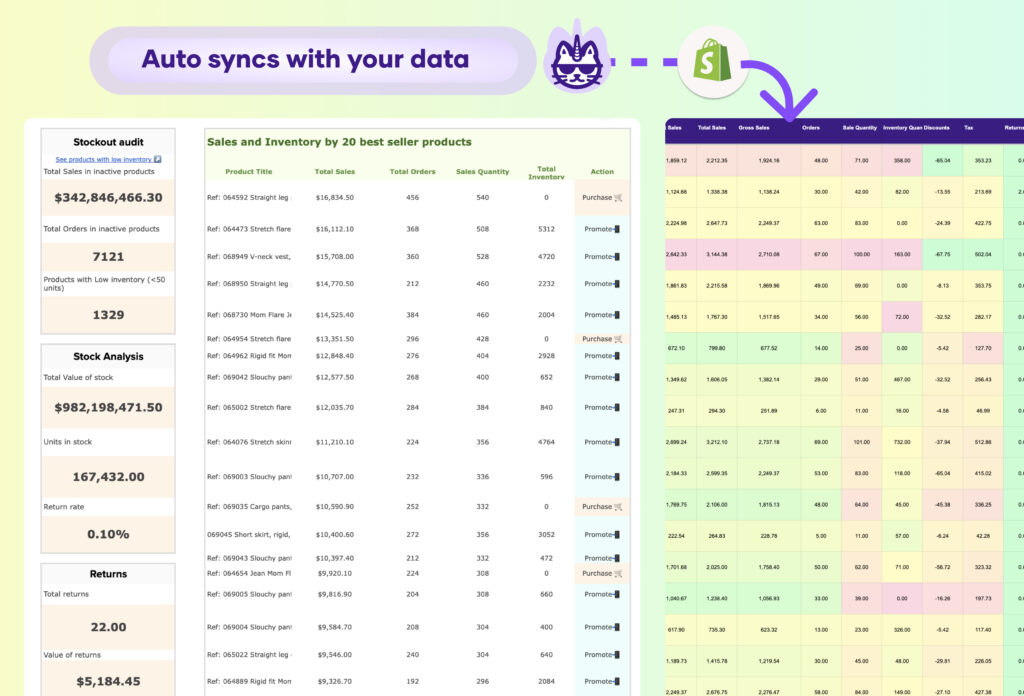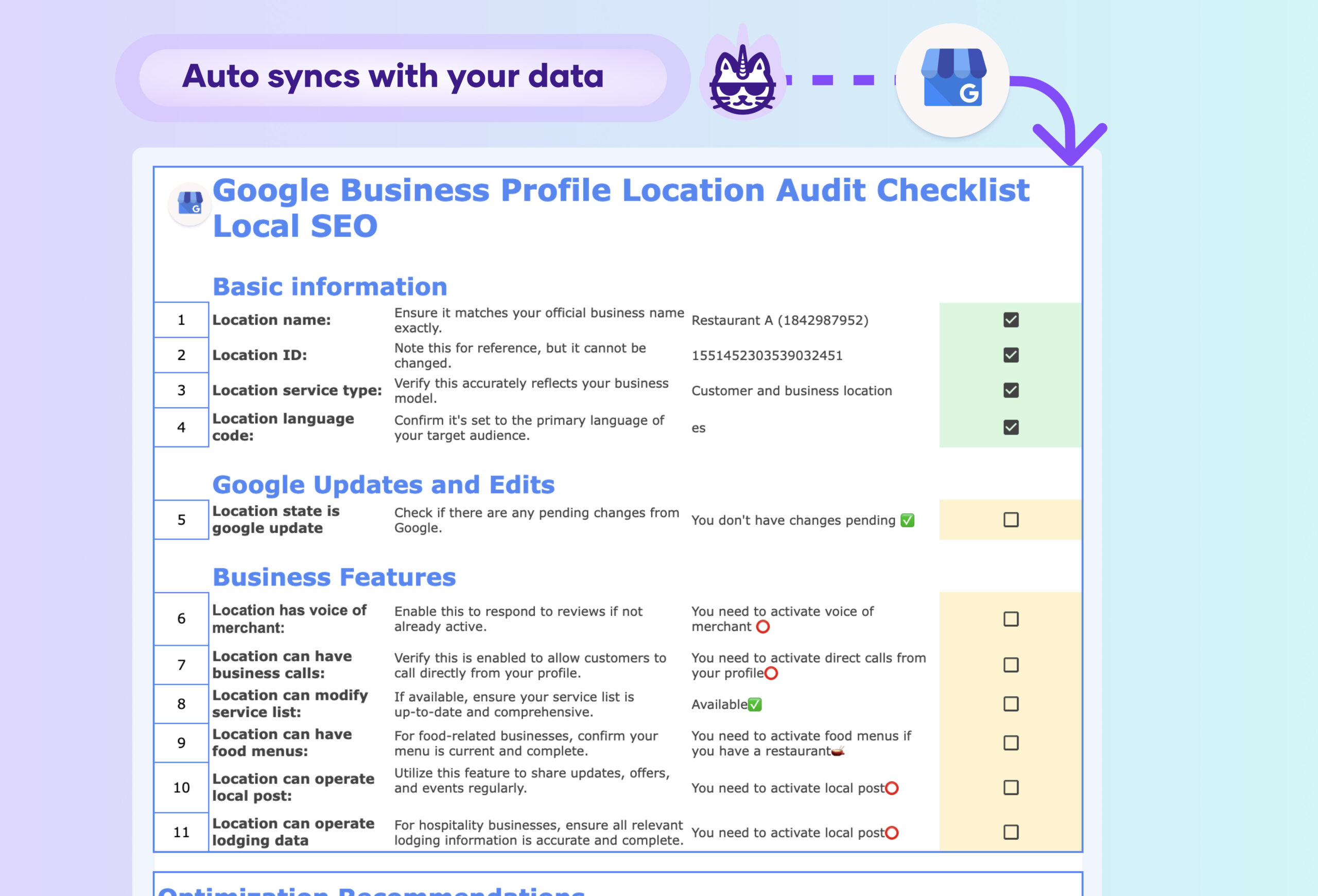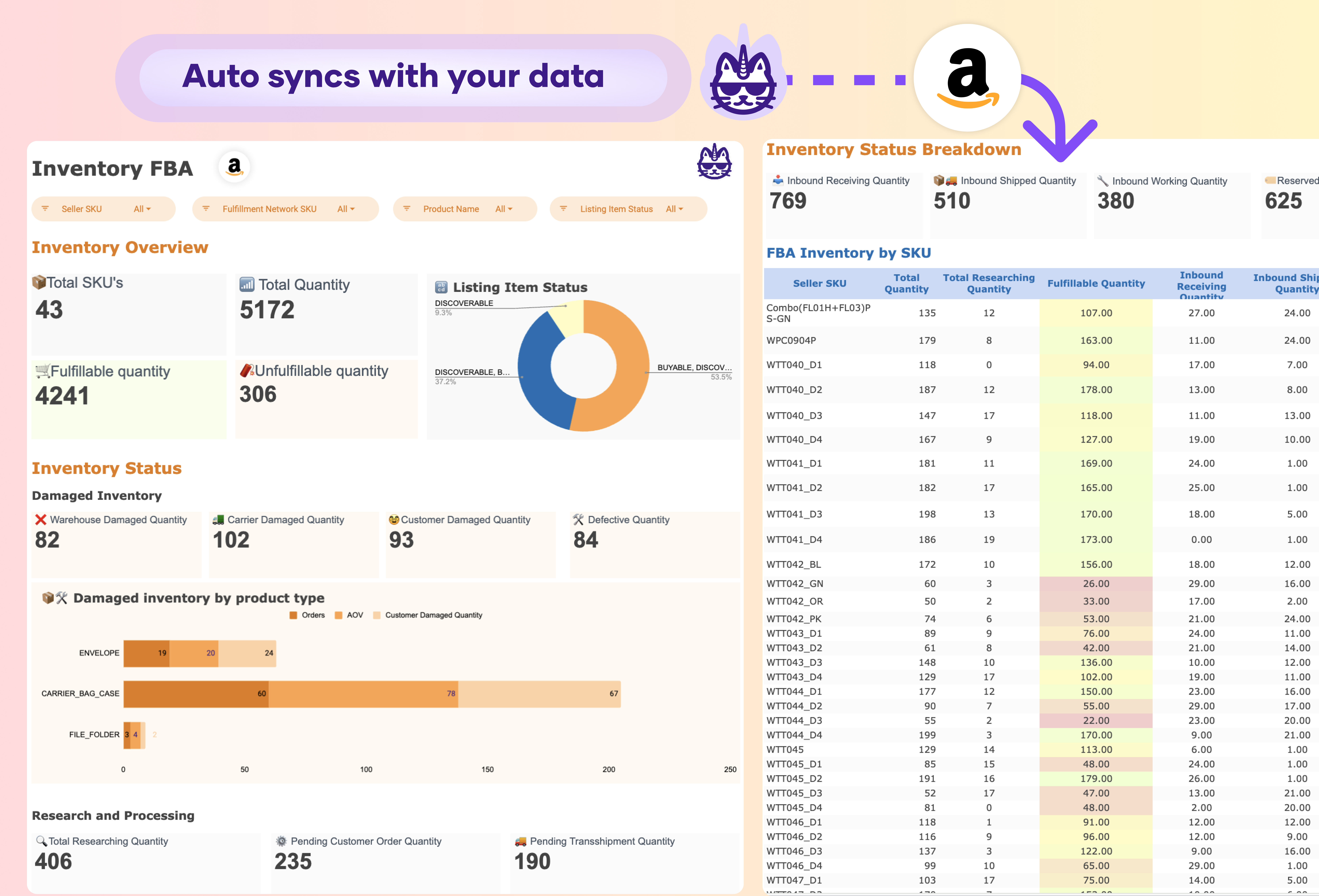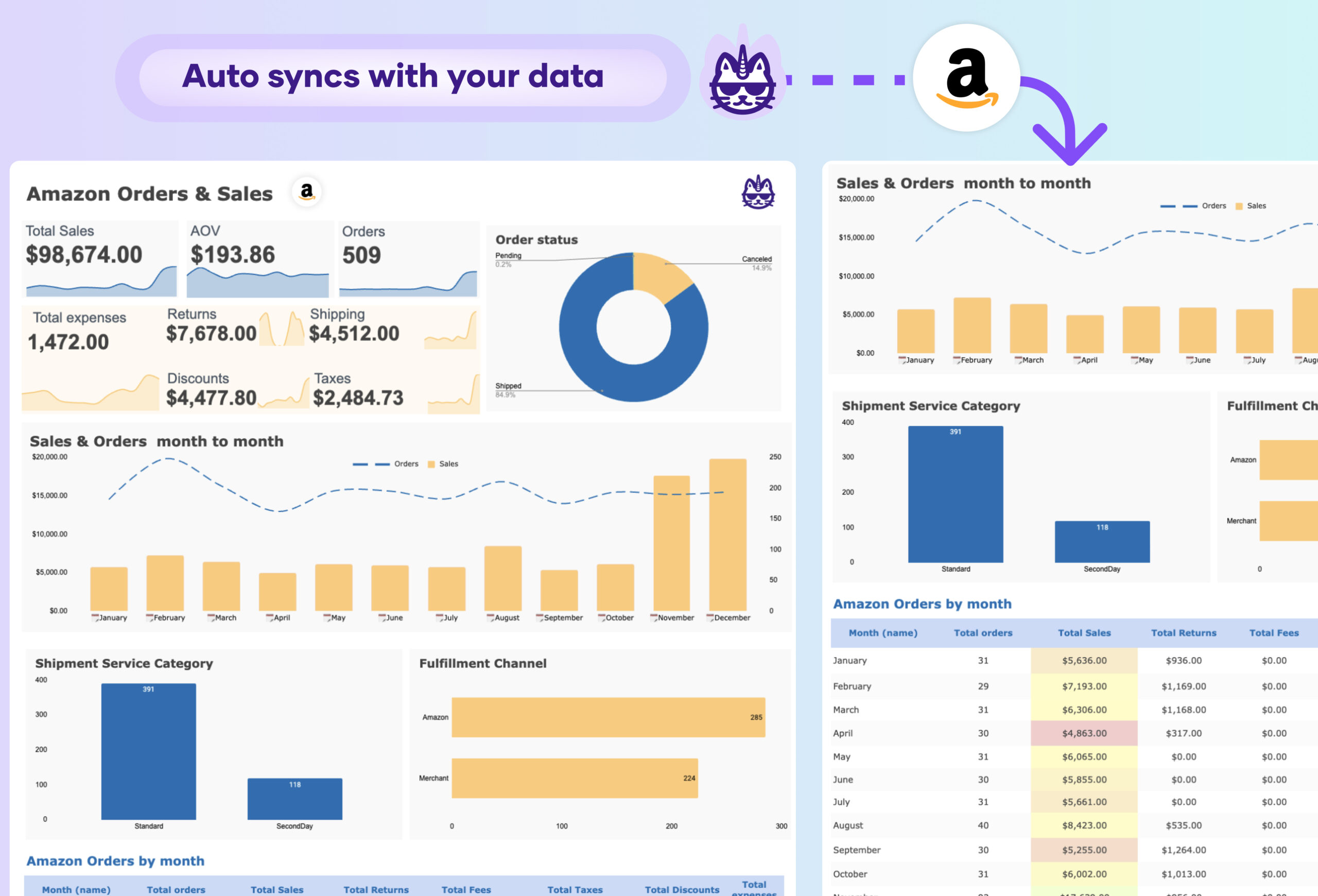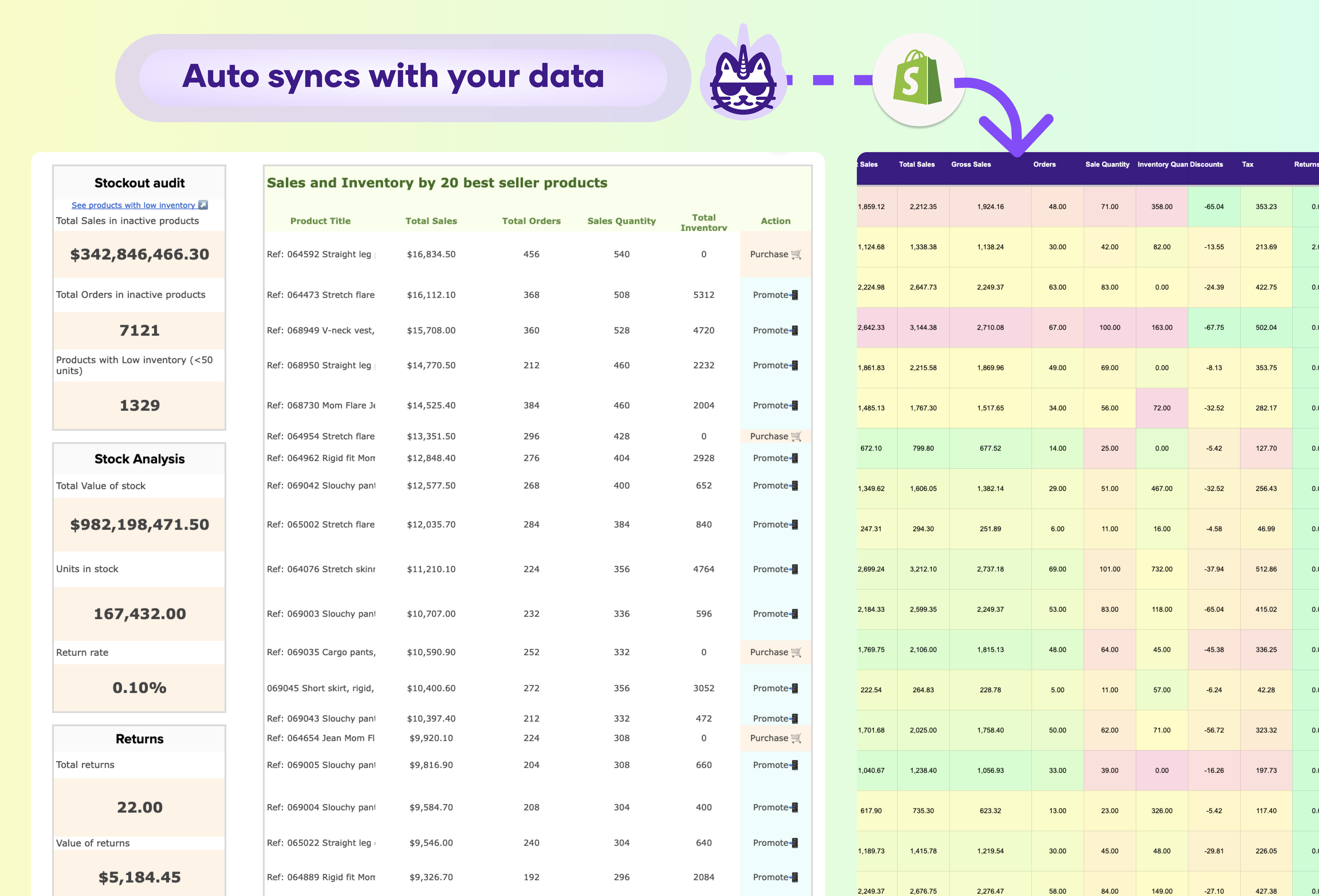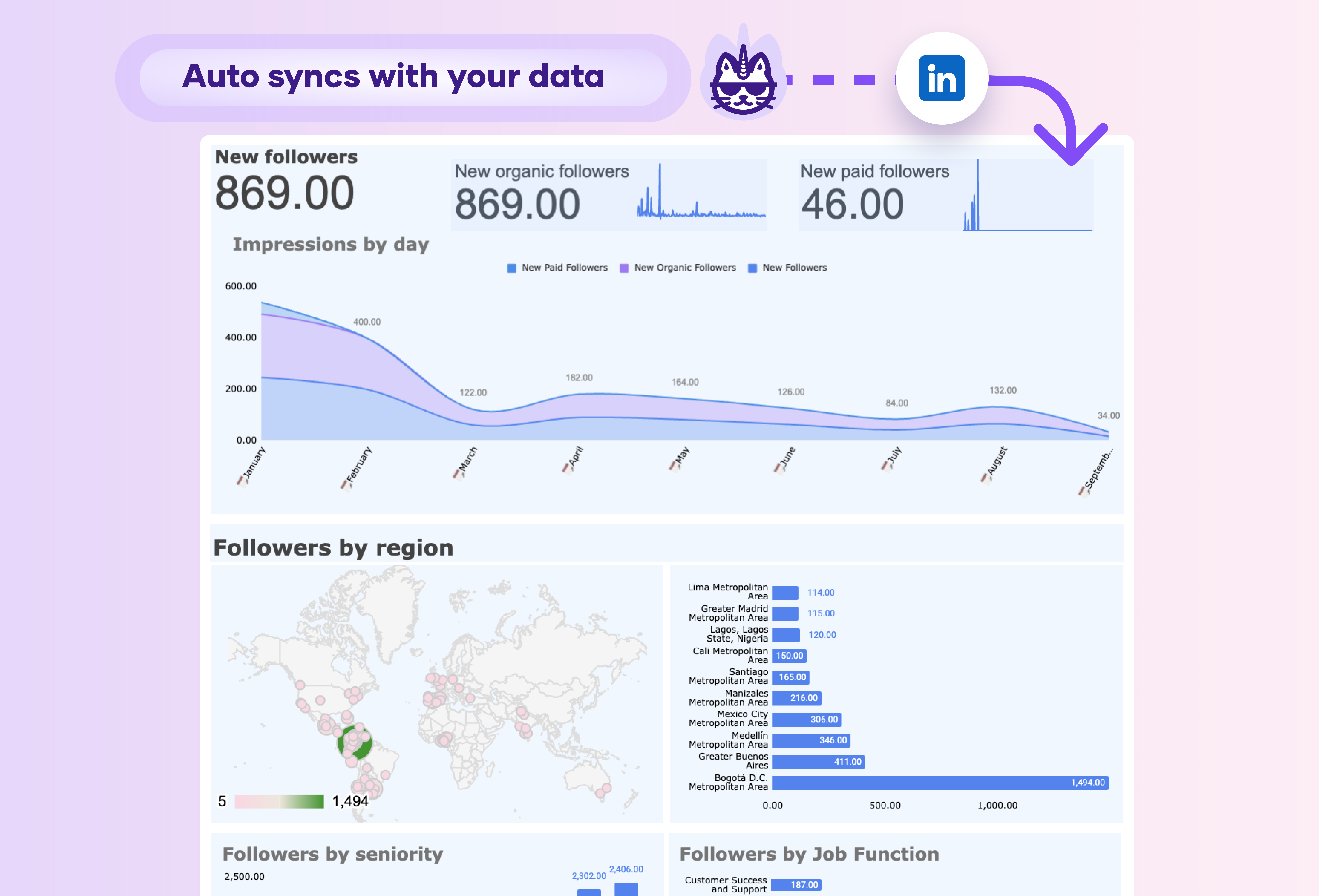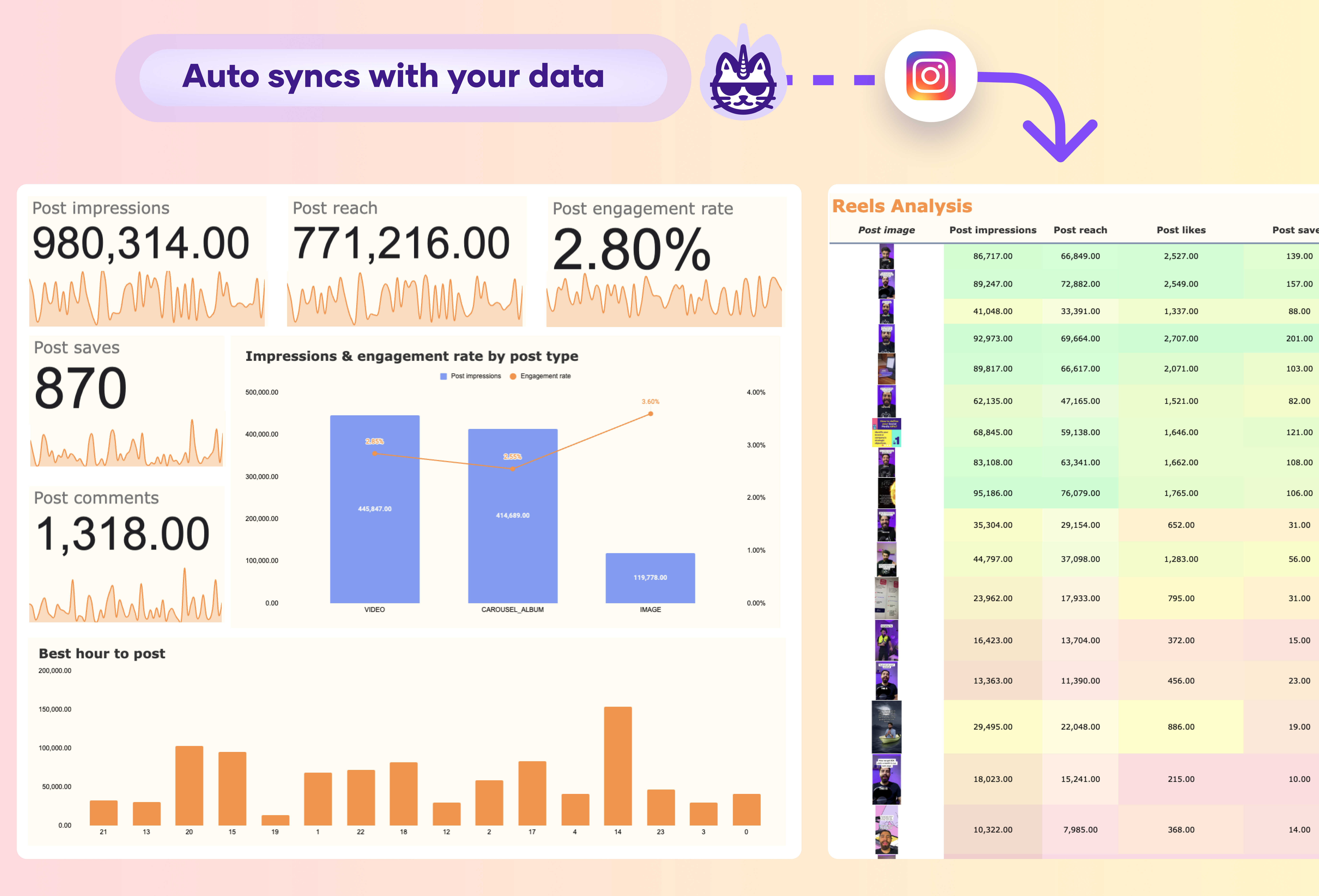A Shopify inventory audit dashboard report should include key metrics such as Total Inventory Value, Total Sales, and Stock Levels for each product, giving a clear view of your inventory’s health and sales performance. The dashboard should track metrics like Out-of-Stock Items, Least-Sold Products with High Inventory (for liquidation), and Best-Selling Products with Low Inventory (for restocking) to help manage stock effectively.
Month-over-month trends in Total Inventory Levels and Sales Performance provide insights into inventory and sales fluctuations. Additionally, monitoring metrics like Order Volume and Return Rates by product helps assess product performance and customer satisfaction.
Visualizations such as Inventory Levels by Product, Sales vs. Stock for top-performing items, and a comparison of Fast-Moving vs. Slow-Moving Products help make informed decisions about which products to promote or liquidate. Including actionable insights on Best-Selling Products with High Inventory (for more campaigns) and those with Low Inventory (for restocking) will optimize stock management and marketing strategies.
Also, include an auto-sync feature for real-time data updates from Shopify using Porter Metrics Google Sheets extension.

